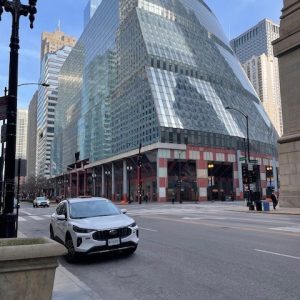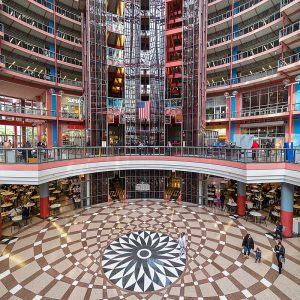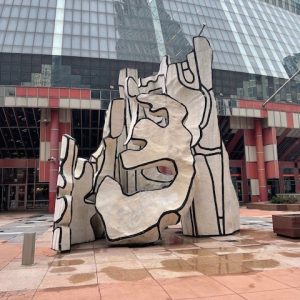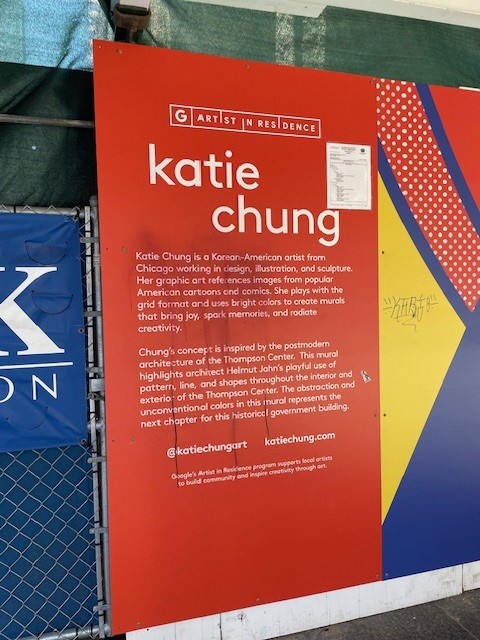Chicago: A World-Class City and Commercial Real Estate Hot Bed
Realogic’s offices are located in downtown Chicago and one of the many, many great things about that—in addition to being surrounded by world-class museums, restaurants and nightspots, music, art, theater, parks and architecture—is that we’re in the midst of so many interesting, innovative, high-profile commercial real estate projects.
The long list of diverse and noteworthy projects currently underway in Chicago, its suburbs and the Midwest region range from the transformation of an iconic former state government building into Google’s Chicago headquarters to the construction of a new football stadium and surrounding mixed-use entertainment district on Northwestern University’s leafy, lakefront campus in suburban Evanston, IL to the development of a new $60 million, 4,500 seat indoor concert venue in downtown Milwaukee’s thriving Deer District, just to name a few.
Noteworthy Local Commercial Real Estate Projects, In Words and Pictures
While the commercial real estate press, local newspapers and even some local and national business publications have done some excellent reporting on these exciting projects, we walk or drive by many of the work sites regularly, if not every day, so we’re in the fortunate position of being able to share regular updates on their progress— complete with copious photos—for those who, like us, are passionate about commercial real estate and like to be in the know about the area’s marquee projects, but aren’t in a position to see them up close and in person on a regular basis.
So, in addition to our regular instructional and educational blog posts meant to help commercial real estate professionals work smarter, easier and better and maximize the returns on their real estate investments, we’re going to begin profiling some of the notable commercial real estate projects here in the Chicago area and Midwest in both words and pictures. We’ll visit the construction sites regularly and post updates and new photos of the projects at critical stages. Whenever possible, we’ll try to gain access to the construction sites— without breaking any laws of course— for an insider’s look. We’ll even try to talk to some of the people and companies behind the projects to get their insights.
Who knows? Besides keeping you up to date on some of the biggest commercial real estate projects in the Midwest, perhaps our informative posts and revealing photos will inspire your big commercial real estate deal.
The first project we’re going to spotlight is the redevelopment of the James R. Thompson Center in downtown Chicago into Google’s new Chicago headquarters.
The History of The James R. Thompson Center

Located at 100 W. Randolph St. in the heart of Chicago’s busy Loop, the iconic 17-story, 1,193,163 square foot building with its curved, transparent glass façade was originally named The State of Illinois Center when it opened in 1985. The new building was meant to serve as the seat of state government in Chicago, the state’s largest city. It allowed the State of Illinois to consolidate 50 different governmental agencies under one roof, saving the state a great deal of money.
The landmark building was designed by famed architect Helmut Jahn, whose other high-profile projects include The Veer Towers in Las Vegas, The Sign Dusseldorf Tower in Germany and the United Airlines Terminal at Chicago’s O’Hare International Airport. By the time construction was complete, the state’s gleaming new postmodern office building cost $172 million to build, double the original estimate. On May 10, 1993, the building was renamed the James R. Thompson Center in honor of former four-term Illinois Governor James “Big Jim” Thompson, who commissioned designs for a new state office building in downtown Chicago in 1978.
Bounded by Randolph, Clark, Lake and LaSalle streets, the Thompson Center occupies a full city block. The site, previously home to the Sherman House Hotel, was chosen due to its proximity to two other prominent local government buildings, the Chicago City Hall/Cook County Government Building and The Daley Civic Center, both of which sit across Randolph St., as well as to help revitalize an area of downtown Chicago that was struggling at the time.

The Controversial, Postmodern Design of The Thompson Center
Jahn’s controversial, ground-breaking postmodern design immediately drew mixed reviews and elicited strong opinions. In homage to the dome on the Illinois State Capitol Building in downstate Springfield, the building featured a soaring 17-story, skylit atrium ringed with a series of balconies, open offices and exposed staircases.
The building’s south and east sides were comprised of 24,600 curved blue glass panels held in place by salmon-colored steel frames– the translucent façade representing openness and transparency in state government– and featured a curving, covered colonnade at its base. The more staid and conventional north and west sides had tall, gridded walls. Large steel and granite columns dotted the east side of the building and ringed the open-air plaza off the main entrance.
Inside, exposed elevators and open escalators helped create an open, airy feeling. The building has two subfloors below street level. A 72-foot circular cut out in the floor on the ground level opened to large food court and State of Illinois DMV facility. A series of corridors off the food court connected the Thompson Center to the underground pedway system that connects several neighboring buildings.
In addition, a Chicago Transit Authority train station – the Clark/Lake Station– was incorporated into the north side of the Thompson Center. It’s the only building in Chicago where six CTA train lines converge and one of the CTA’s three busiest stations, making the Thompson Center a vital public transportation hub connecting the city’s north, west and south sides.
Snoopy In A Blender

Finally, no discourse on the Thompson Center would be complete without mentioning “Snoopy in a Blender”. The large plaza outside the building’s main entrance was famously adorned by a 29-foot fiberglass sculpture by artist Jean Dubuffet. Officially titled “Monument with Standing Beast”, the sculpture was affectionately nicknamed “Snoopy in a Blender” due to it being black and white, like the eponymous dog from the Peanuts comic strip, and an abstract, modernist work.
The Thompson Center Was Beset with Costly Infrastructure and Maintenance Problems
As ambitious and inspired as architect Jahn’s design was, the building was beset with costly infrastructure and maintenance problems from the start. The biggest issue was heating and cooling the building, due to its massive all-glass south and east façade, open 17-story atrium and open office floor plan.
Heating and Cooling Issues
While the architectural plans originally specified using custom double paned, thermal insulated glass for the facade, the state instead downgraded to single pane glass to save money, which often made the Avant-garde building exceedingly hot in the summer and freezing cold in the winter, straining the building’s overtaxed heating and cooling system. In the summer, the building became so hot, workers resorted to using portable fans to cool themselves, which itself was a challenge because the building had a minimal number of electrical outlets in its walls. Although the building’s thermal storage cooling system partially operated at night when electricity cost the least, the building’s utility costs were still staggering. In 1986, it cost $500,000 a year to power the State of Illinois Center, nearly $1.44 million in today’s terms.
Visibility and Noise Problems
Because the glass panels in the façade were nearly transparent, unblocked sunlight streaming through created an intense glare that at times made it impossible for workers to read their computer screens. Noise was also a problem. While inspiring, the soaring 17-story atrium proved to be loud and noisy, sometimes magnifying noise to the point where workers in the offices had trouble hearing, even on the uppermost floors. And, while those glass elevators helped reinforce the theme of transparency in government that inspired the building’s design, they were extremely loud, to the point where the state eventually had to install acoustical shields to block the noise.
For Sale: A Polarizing Postmodern Building Designed by Famed Architect Helmut Jahn
By 2003, the state was struggling under the weight of massive budget issues. Then Illinois Governor Rod Blagojevich proposed the state sell the Thompson Center to reduce expenses and generate much needed cash for the state’s coffers. Although his proposal was widely criticized, state lawmakers eventually agreed on a plan to sell the expensive, troubled building, only to reverse course and agree instead to a new plan involving a 10-year, $200 million mortgage. Then Illinois Attorney General Lisa Madigan declared the plan unconstitutional, so the state found itself back at square one. Meanwhile, faced with a growing budget crisis, the state began deferring some of the regular maintenance and repairs the Thompson Center needed, exacerbating the building’s structural and operational problems.
A Second Attempt to Sell the Thompson Center
In 2015, then Illinois Governor Bruce Rauner again proposed the state sell the Thompson Center, an idea also backed by then Chicago Mayor Rahm Emmanuel. Rauner estimated the slowly deteriorating building needed approximately $100 million in repairs at that point and selling it and relocating the employees based there would save the state between $6 million and $12 million annually. Rauner wanted to sell the building at a public auction and sought appraisals to help determine its value. He remarked that the building was “ineffective”, “very wasteful” and a “very inefficient waste of space”. Rauner anticipated that a developer would purchase the controversial building, raze it and redevelop the prime downtown Chicago site, a prospect cheered by some and lamented by others.
However, a budget standoff intentionally triggered by Rauner kept the plan from proceeding. In 2017, Rauner again proposed the state sell the Thompson Center to provide some relief from its mounting budget deficit. This time, State Speaker Michael Madigan formed a legislative committee to explore the idea, but the budget impasse between Rauner and state lawmakers, which was in its second year, again scuttled any serious progress.
For the rapidly fading Thompson Center, once a proud monument to state government, the budget impasse was a double gut punch. Not only did it prevent the state from selling the building, but without an approved operating budget, the state had few funds for much-needed repairs and upkeep, plunging the building into an even deeper state of disrepair.
The Thompson Center Spirals into Decay
By 2019, the massive atrium that was the centerpiece of the building was leaking. The building’s signature curved blue glass façade was coated in dust and dirt after not having been cleaned in five and a half years. The carpet was worn, faded and torn, held together with duct tape in spots. The once colorful paint on the front columns was chipped and faded and Dubuffet’s popular “Snoopy in a Blender” sculpture was marred with ugly graffiti. The state said it was spending a whopping $17 million a year to operate the building and estimated that the repairs it needed would cost $325 million— an astronomical $525 million if essential maintenance on the building was delayed until 2026.
The huge, spaceship-like building was also plagued by drainage issues. In 2009, a 600-pound slab of granite fell off one of the columns on the east side of the building and onto busy Clark St. because the steel underneath was rusted and deteriorated. No one was injured, fortunately, but the alarming incident compelled the state to remove all the granite panels from all the columns before any more fell off. Over time, the Thompson Center had slowly but surely become an expensive eyesore the cash-strapped state could ill afford.
In 2019, former Governor Thompson himself remarked that the once resplendent building looked like a scrap heap while architect Jahn lamented, “It’s just dying a slow death.”
At Long Last, A Buyer for The Thompson Center
Then, a breakthrough. In 2019, Governor J.B. Pritzker signed legislation that the Illinois General Assembly had approved two years earlier authorizing the sale of the Thompson Center through a competitive bidding process. The measure mandated that the beleaguered building be sold within three years. Pritzker promptly solicited proposals for technical and project management assistance to help with the sale.
In December 2021, state officials announced tentative plans to sell the Thompson Center to JRTC Holdings, a joint venture between local real estate developer Michael W. Reschke and the Capri Investment Group, for $70 million. JRTC would redevelop the building. The state would contribute $148 million towards the project then buy back 425,000 square feet of office space once the redevelopment was complete.
However, in July 2022, Pritzker and former Chicago Mayor Lori Lightfoot announced that a new deal had been struck. The state would sell the entire building to JRTC Holdings for $105 million. It would use $75 million of that to purchase the former BMO Harris Bank headquarters at 115 S. LaSalle St., which JRTC would redevelop into new offices for the state, and the state would receive $30 million in cash.
Google’s New Chicago Headquarters
JRTC would then redevelop the Thompson Center into Google’s new Chicago headquarters, leaving the shape and familiar profile of the building intact while incorporating new and improved versions of some of the original features, including the 17-story atrium and curved glass façade. Once the redevelopment was complete, Google would purchase the building from JRTC.
The extensive, build-to-suit makeover is expected to cost $280 million and take two years. Per the terms of the sale agreement, the Clark/Lake L station must remain open during construction and must be incorporated into the new and improved version of the building.
The Governor’s Office estimates that the sale of the Thompson Center, the purchase of and move to 115 S. LaSalle and other efforts to consolidate the state’s Chicago real estate portfolio will save the state nearly $1 billion over 30 years.
The Redevelopment of The Thompson Center Begins
In October 2023, 20 years after former Illinois Governor Rod Blagojevich first proposed selling the Thompson Center, the state issued permits to Google allowing them to remove the glass panels and metal framework comprising the building’s signature blue, curved glass façade. Work on the building began seven months later in May 2024. A groundbreaking ceremony was held to commemorate the long-awaited moment, with Pritzker and Chicago Mayor Brandon Johnson signing one of the light blue glass panels that had been removed.
The building’s redesign is being led by Helmut Jahn’s namesake architectural firm Jahn, now led by his son Evan Jahn. Renderings of the new design and some details of the work that will be done—a project developer JRTC describes as more of rebuild than a makeover– have been made available to the public and shared in numerous news stories.
New Energy Efficient Systems and Features
While the new version of the building will also have a curved glass façade on the front, Google is replacing the original single pane glass with a more energy efficient triple pane glass wrap. The new glass will also be opaquer to help regulate the temperature in the building and to reduce glare and improve visibility. The new glass façade will also feature three levels of covered outdoor terraces with greenspaces.
All the building’s internal systems are being replaced and upgraded, including its heating and cooling systems, and the building is transitioning to all-electric power as part of the developer’s efforts to achieve LEED Platinum status, the highest level of LEED certification. Google aims to use only 24/7 carbon-free energy in all its buildings by 2030.
The covered colonnade at the base of the building will be heightened and redesigned to accommodate restaurants and retail stores and seasonal activities.
A New Chapter for The Thompson Center
The new version of the building should be move-in ready by 2026. When finished, the reborn and reimagined Thompson Center will become Google’s new Chicago headquarters and will house approximately 2,000 employees, though the company plans to maintain the two offices it currently has in Chicago’s Fulton Market neighborhood.
Although the building will be privately owned, Google says its famed atrium will remain open to the public but hasn’t shared yet whether other areas of the building will too. After receiving some much-needed TLC, “Snoopy in a Blender” will be moved to its new home on the grounds of the Art Institute of Chicago. Per the terms of the state’s sale agreement, the Clark/Lake L stop will remain publicly accessible from the building. Google promises “a new and improved CTA experience” at its new headquarters but has not released any details yet.
“With the Thompson Center, we saw a chance to revitalize the Loop, but also take this iconic building that some thought of tearing down and instead make the renovations necessary to respectfully steward it into the 21st century,” said Google’s head of Chicago operations Karen Sauder.
Work on The Thompson Center Is Well Underway
As of late July, work on the redevelopment of the Thompson Center was well underway. Cranes, construction elevators, generators and other equipment dotted the work site. The property was surrounded by a covered walkway on two sides and temporary fencing featuring a large, colorful, abstract mural by local artist Katie Chung. According to a sign at the site, the mural was inspired by the postmodern design of the Thompson Center.
- On the Randolph St. side, most of the iconic blue, curved glass façade had been removed, allowing a look inside.
- The steel girders at the base of the atrium were exposed. The lobby was filled with construction debris and stacks of building materials. The building’s exposed elevator shafts, staircases and ascending levels of balconies were visible inside and still intact.
- On the east or Clark St. side of the building, the troublesome steel and granite columns had been completely removed, as had a large section of the exterior wall stretching the entire height of the building, providing a clear view of the building’s metal skeleton and subflooring.
- Near the corner of Clark and Lake streets, a sign above the entrance to the covered walkway outlined the ambitious project for passerbys.
- On the north or Lake St. side of the building, the Clark/Lake L Station was still accessible from the street, but the windows between the station’s lobby and the Thompson Center were blacked out.
- On the east or LaSalle St. side, the windows and exterior walls had been removed from the ground level, exposing the guts of the building.
Check Back for Regular Updates
Realogic’s offices are just a stone’s throw from the construction site, so we’ll head back, check on the revamp’s progress and provide updates with new photos regularly.
Next Up: The Redevelopment of the Former Sears Headquarters Site
Next in our CRE Spotlight series, we’ll report on the redevelopment of the former Sears headquarters site in suburban Hoffman Estate, IL into a massive data center park.
Underwriting Help for Commercial Real Estate Redevelopment Projects
If you’re considering undertaking or investing in a redevelopment project of your own, Realogic has extensive experience underwriting ground up development and commercial real estate redevelopment projects of all type, size and complexity. For more information, visit the underwriting page on our website.
About the Author
Terry Banike is Vice President of Marketing for Realogic. Over the course of his career, he has worked in marketing, communications, journalism and public relations, and has written news stories and features for newspapers, trade publications, newsletters and blogs. A rabid reader of anything and everything on commercial real estate, Terry closely follows commercial real estate news and trends and frequently posts about real estate on the Realogic Blog. He can be reached at tbanike@realogicinc.com.
Sources
- How Bad Is It to Actually Work in the Thompson Center; Whet Moser; Chicago Magazine; October 16, 2015
- Helmut Jahn’s Thompson Government Center Faces Demolition Threat; Alan G. Brake; Dezeen; October 16, 2015
- Rauner Says He Wants to Sell Thompson Center in Chicago; The Associated Press, Illinois Public Radio; Illinois Public Media; October 13, 2015
- Documentary Hopes to Save Chicago’s “Starship”, the Thompson Center, From Demolition; Alya Abourezk; Arch Daily; November 28, 2017
- The Oft-Troubled History of The James R. Thompson Center; CBS News Chicago; August 29, 2019
- Chicago’s Thompson Center in Sad State; Blair Kamin; Chicago Tribune; May 25, 2019
- Chicago’s Thompson Center Sells For $70 Million; Developer Reveals Makeover Plans For Iconic Building; Craig Wall; ABC7 Chicago; December 15, 2021.
- Thompson Center Sale Finalized With Google To Be Building’s Lone Occupant; Peter Hancock; WSIU Public Broadcasting; July 27, 2022
- New Thompson Center Owners Lure Google As A Tenant; Jackie Kostek, Mugo Odigwe, Todd Feurer; CBS News Chicago; July 27, 2022
- Google Releases Renderings, Plans For Thompson Center in Chicago’s Downtown; Brad Edwards; CBS News Chicago; December 13, 2023
- Google It! Thompson Center’s $280 Million Redevelopment To Become Google’s Chicago HQ Kicks Off; Abby Miller; Chicago Sun Times; May 6, 2024
- Thompson Center’s Transformation Into Google’s Chicago Headquarters Begins; Melody Mercado; Block Club Chicago; May 6, 2024
- State Officials Offer Last Goodbye to Former Thompson Center As Renovations Begin; Andrew Adams; WGLT; May 9, 2024
- Developers Behind Thompson Center Revamp Buy Former CBOE Headquarters In The Loop; Abby Miller; Chicago Sun Times; August 5, 2024
- Thompson Center | Chicago Architecture Center
- James R. Thompson Center – Data, Photos & Plans – WikiArquitectura
- www.chicago-L.org; Clark/Lake
